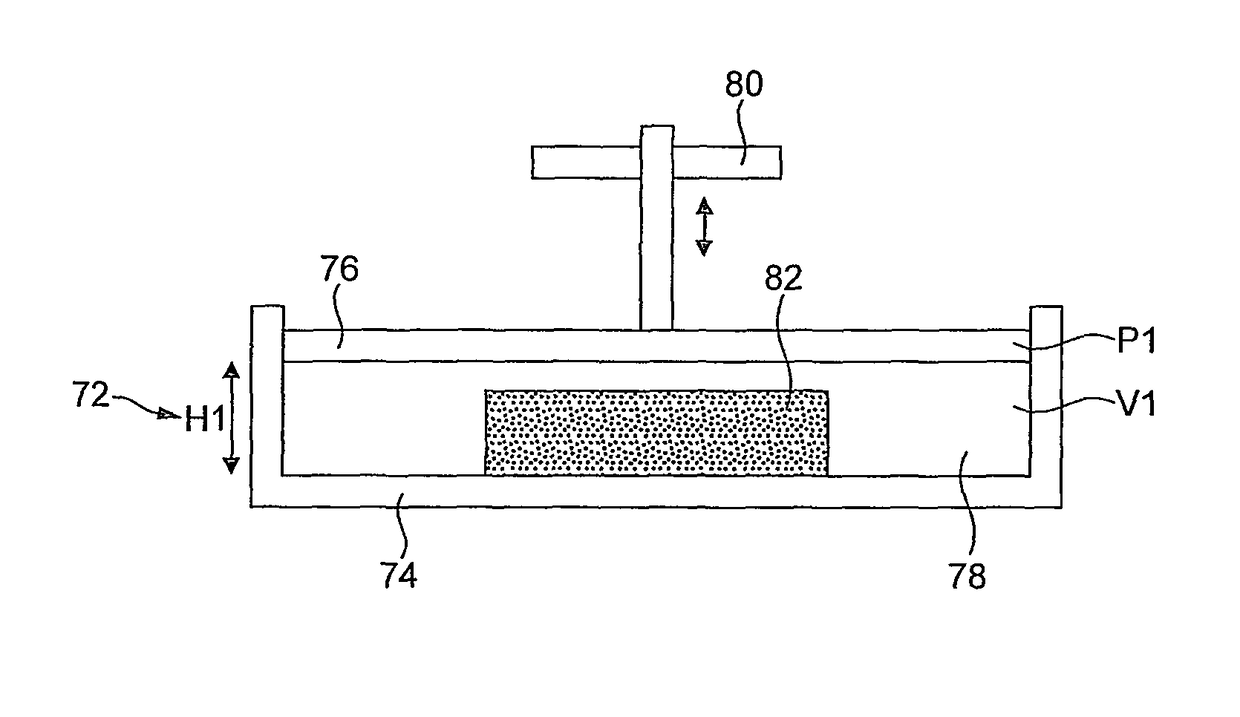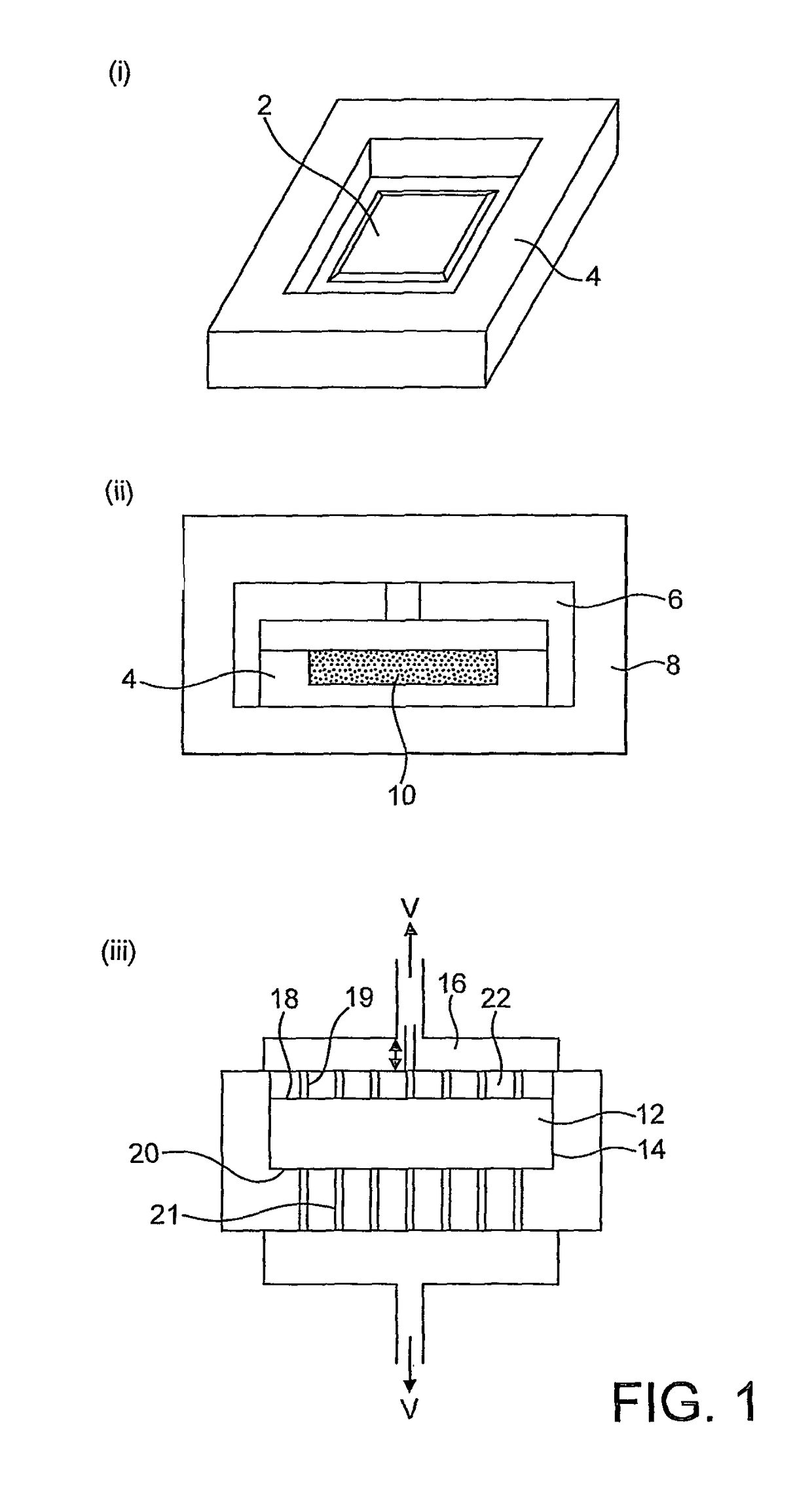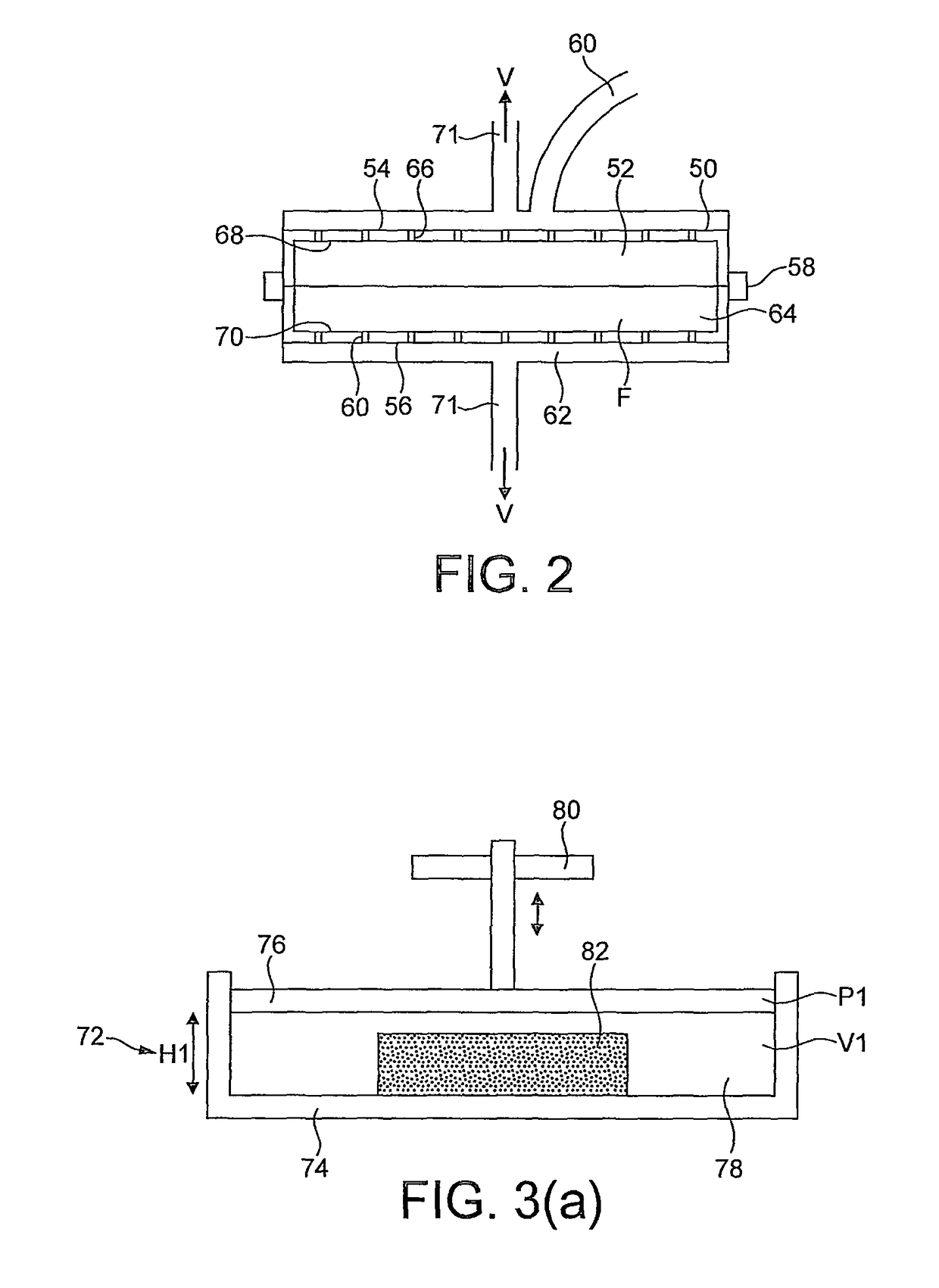Structural foam and manufacture thereof
a structural foam and anisotropy technology, applied in the field of anisotropy structural foam, can solve the problems of difficult and time-consuming modification of the polymer composition of the foam, exhibit some degree of anisotropy, and are usually not controlled, so as to improve static mechanical properties, enhance anisotropy index, and enhance mechanical properties
- Summary
- Abstract
- Description
- Claims
- Application Information
AI Technical Summary
Benefits of technology
Problems solved by technology
Method used
Image
Examples
example 1
[0091]In this example, foam embryos of a styrene-acrylonitrile (SAN) polymer, similar to the polymer employed to manufacture the applicant's Corecell (Registered Trade mark) structural foam were prepared. The embryos also contained a blowing agent, comprising azobisisobutyronitrile (AZDN) and acetone. The embryos were cut to a predetermined rectangular shape and size and mounted within a mould, disposed within a hydraulic press, that was shaped and dimensions so as to determine a maximum dimension for the width and length, in the horizontal direction, of an expanded foam body formed within the mould from the embryo. In order to reach the desired value of anisotropy index, a restriction system was provided to prevent any gain in length and width of the embryo sample while it was heated and expanded to form the expanded foam body. The samples were left in the hydraulic press for a certain period at a given temperature to achieve the required expansion defined by the limits of the moul...
PUM
| Property | Measurement | Unit |
|---|---|---|
| pressure | aaaaa | aaaaa |
| temperature | aaaaa | aaaaa |
| pressure | aaaaa | aaaaa |
Abstract
Description
Claims
Application Information
 Login to View More
Login to View More - R&D
- Intellectual Property
- Life Sciences
- Materials
- Tech Scout
- Unparalleled Data Quality
- Higher Quality Content
- 60% Fewer Hallucinations
Browse by: Latest US Patents, China's latest patents, Technical Efficacy Thesaurus, Application Domain, Technology Topic, Popular Technical Reports.
© 2025 PatSnap. All rights reserved.Legal|Privacy policy|Modern Slavery Act Transparency Statement|Sitemap|About US| Contact US: help@patsnap.com



